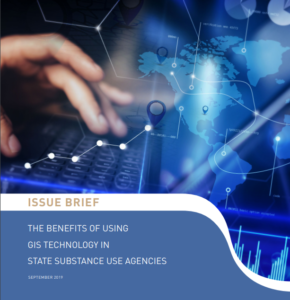A new Issue Brief from NASADAD discusses how geographic information system (GIS) and other data visualization technologies enhance the way that state substance use agencies plan, implement, monitor, and communicate about their prevention, treatment, and recovery activities. GIS is a powerful analytical tool that is increasingly being used in new and innovative ways by state substance use agencies.
GIS technology has been used in many fields for decades, but its adoption in the substance use field is relatively new. This Issue Brief provides case studies of two states – Washington and Pennsylvania – that have made GIS an integral part of their substance use agency’s operations.
The Issue Brief, The Benefits of Using GIS Technology in State Substance Use Agencies, describes the benefits and impacts GIS and data visualization tools have had on shared challenges: how to improve access to prevention, treatment, and recovery services; where to deploy limited resources; and how to effectively communicate with a diverse group of stakeholders – community partners, state and local policymakers, healthcare providers, the media, and the general public – about pressing substance use problems. The Issue Brief is meant to inspire states’ adoption of these technologies in their own substance use agencies. It describes how GIS has enabled Washington and Pennsylvania to strengthen program management and service delivery through mapping of state and community data, better-informed decision making, and greater efficiencies in service planning.
Read or download the Issue Brief here.
